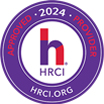
The use of this seal confirms that this activity has met HR Certification Institutes (HRCI) criteria for recertification credit pre-approval.
This activity has been approved for
1.5 HR
(General) recertification credit hours toward aPHR, PHR, PHRca, SPHR, GPHR, PHRi and SPHRi recertification through HR Certification Institute (HRCI). Please make note of the activity ID number on your recertification application form. For more information about certification or recertification, please visit the HR Certification Institute website at www.hrci.org." ...more
Overview
Project management is the art and science of getting results by following a roadmap laid down to turn customers' desires into concrete products and services by following established procedures in a defined sequence. The Project Management Institute brought active practitioners together to produce the Project Management Body of Knowledge, PMBOK, which is used around the world on all sorts of projects of varying sizes, with or without software support tools.
PMBOK definition: A project is a temporary endeavor undertaken to create a unique product or service. It is temporary because every project has a definite beginning and a definite end. It is Unique because the product or service delivered is different from others. Organizations use projects to achieve their strategic needs, which cannot be attained through normal operational means.
Dr. Joseph Juran, a founder of the quality movement, provides another definition: A project is a problem scheduled for solution. The key to a successful project is beginning with a clear definition of the business problem: What is the gap between what we have and what we want?
Why you should Attend
In today's world, many operations once performed by specialists are assigned to non-specialists as 'projects.' However, most professionals have not received training or tools to help them manage projects efficiently and effectively. The 'project' is added to an already full schedule, major decisions have been made elsewhere, and you have no 'team' to carry out the work. Many projects fail because they have no focusing definition, which leads to scope creep, missed deadlines, and blown budgets. More time is consumed in solving these problems and firefighting. Risks and contingency plans are often ignored.
Without the basic tools of project management, people focus on a series of tasks and a To-Do list. Priorities get missed in favor of someone else's urgent agenda. More time is lost chasing down information and reinventing the wheel.
Without the formal discipline of project management, it's hard to accomplish what is necessary and keep all your stakeholders satisfied.
Avoid these predictable pitfalls, use project management basics, and bring your projects in successfully, efficiently, and effectively with the results the stakeholders want.
As a result of this educational program, Non-Project Managers will be able to:
- Plan, execute and manage projects more effectively and efficiently
- Solve business problems
- Minimize risk
- Continuously improve project results
- Use PM tools optimally.
Areas Covered in the Session
- The context for Project Management
- What are projects and where do they fit?
- Our strengths and challenges in managing projects as Non-Project Managers
- Project success factors and pitfalls
- Projects vs. operations
- Project Management Processes
- Apply Process Model and Chain of Processes to projects
- Understand the Project Management process and project phases
- Project Initiation
- Articulate project Business Problem
- Make the Business Case :
- Making Project Go/No-Go Decision
- Perform Stakeholder analysis
- Publish Project Charter
- Planning and Scheduling
- Elicit Requirements
- Communicate and manage conflict effectively
- Analyze scope, constraints, assumptions
- Create a Work Breakdown Structure and tactical plan
- Sequence activities optimally with Logic Diagram
- Manage the Critical Path
- Schedule, assign responsibility, and track
- Cost Management
- Estimate Costs
- Define budget and tracking
- Risk Management
- Define risks, qualitatively and quantitatively
- Use SWOT Analysis
- Develop a Risk Impact Matrix
- Track and manage Risk; Escalate Risk Proactively
- Human Resource and Communication Plan
- Develop Role and Responsibility Plan; Create RACI diagram
- Create a Staffing Management Plan
- Define Project Team structure
- Develop Management Communications Plan
- Create Training Plan
- Project Execution, Monitoring, and Control
- Define What and how to monitor; scope, schedule, cost, quality
- Capture actual results for scope, schedule, cost, quality
- Conduct Project Reviews
- Project Closure
- Capture Best Practices
- Apply Lessons Learned for continuous improvement
Who Will Benefit
Speaker Profile
Daniel A Clark has over 25 years of experience in Financial Services from regional banks to global giants like Citigroup and GE Capital. His early career roles included: sales, credit risk management and operations. For the last 18 years he has been fully focused on Risk Management and Internal Audit.
His experience as Chief Auditor in two regional banks and as a senior officer in Audit and Risk Review for Latin America provides unique insight into management practices in and outside of the United States. He is also a recognized expert on GRC, a Public Speaker and Blogger and has written a book; Dare to Be Different: An Auditors Personal Guide to Excellence: that has been well received by the audit community.
